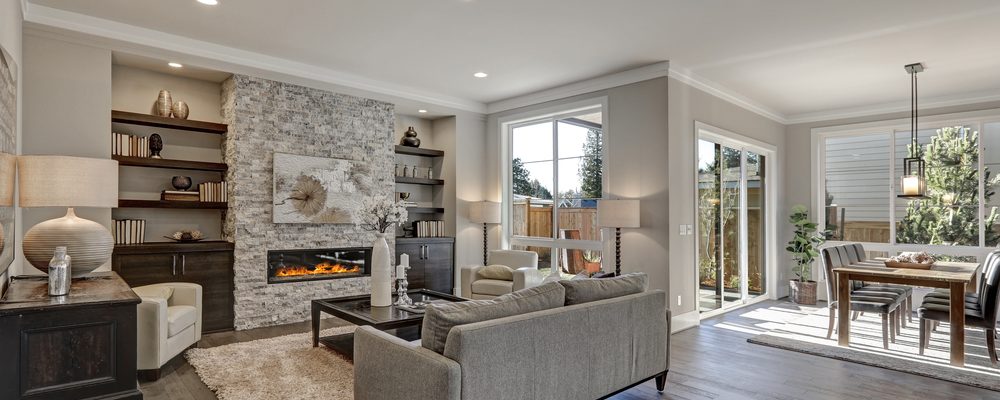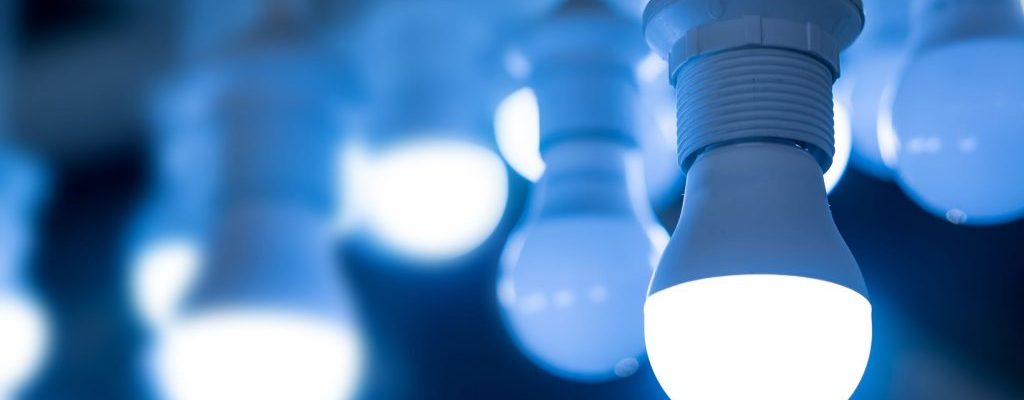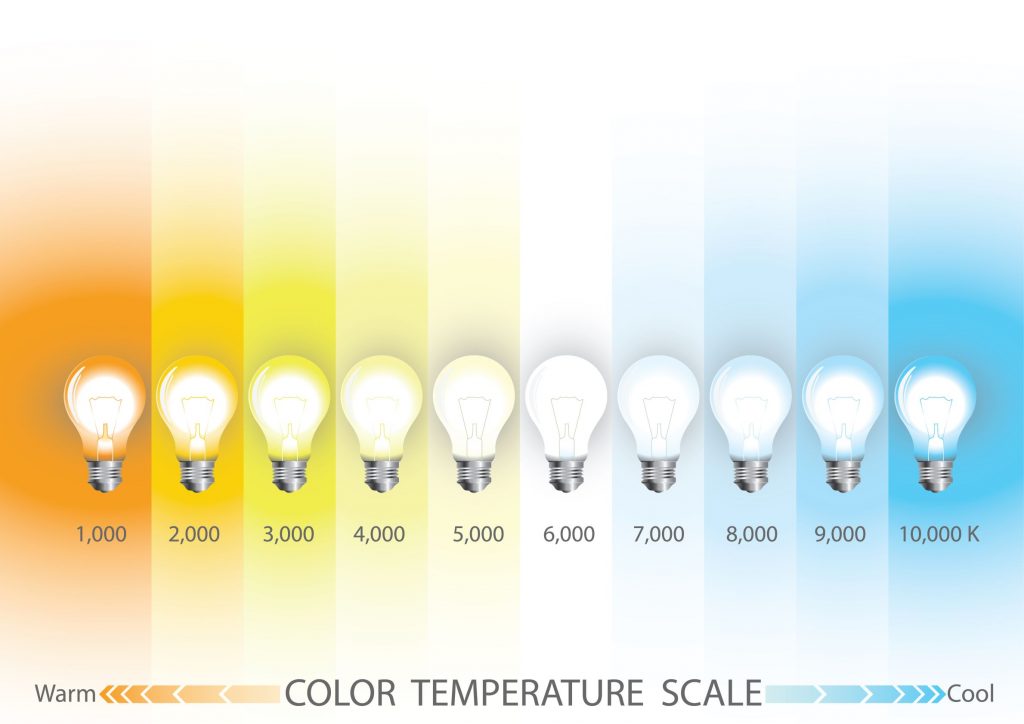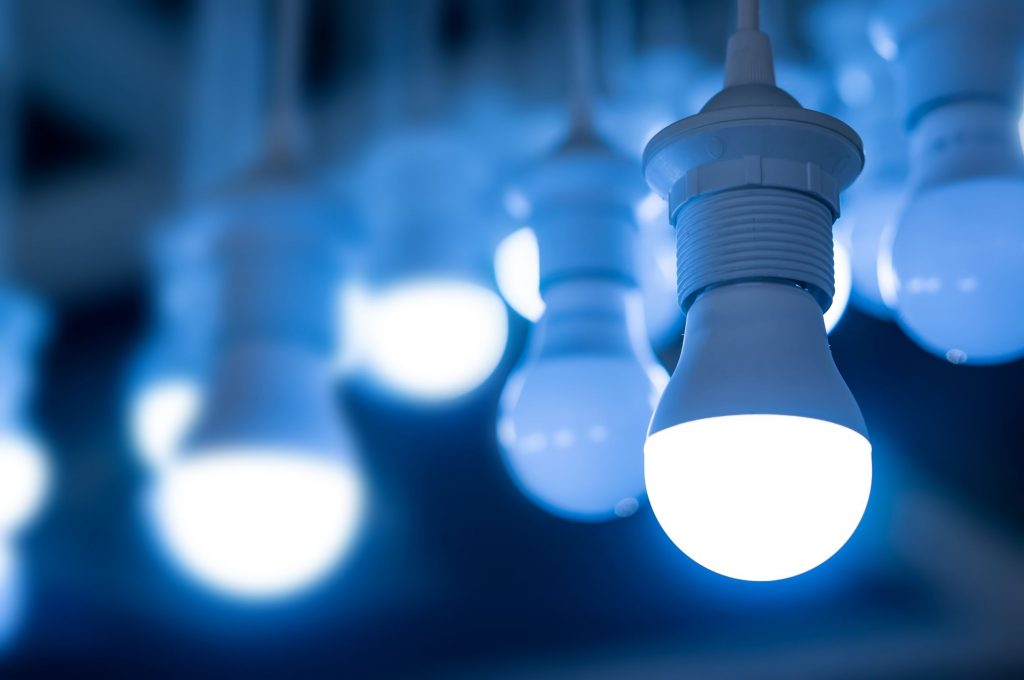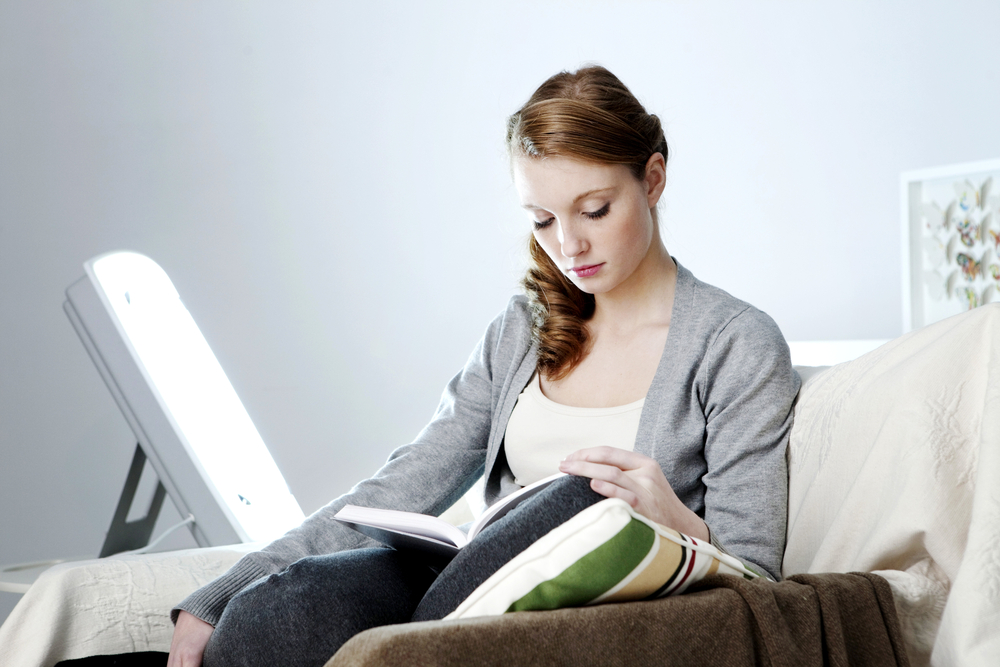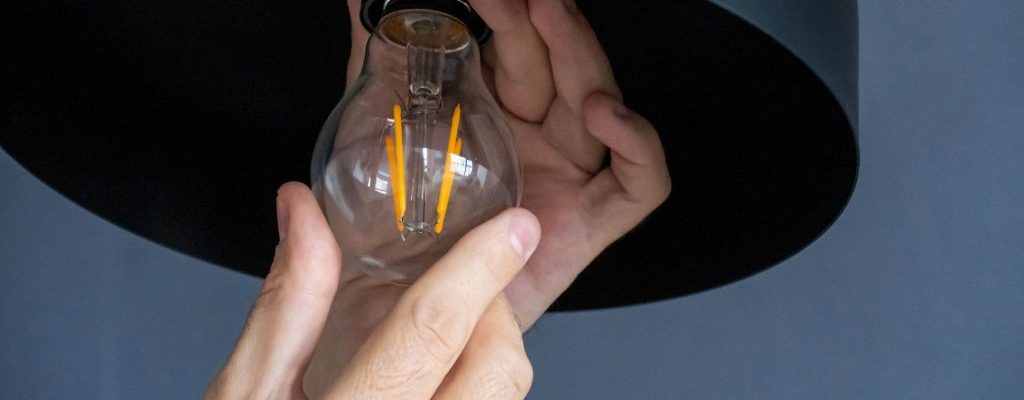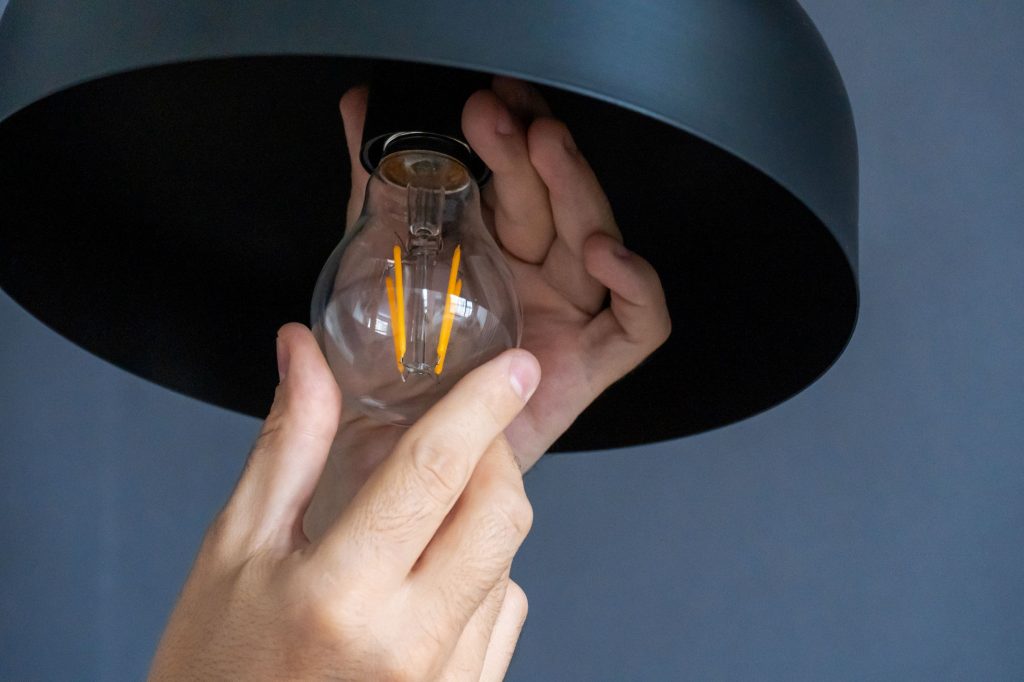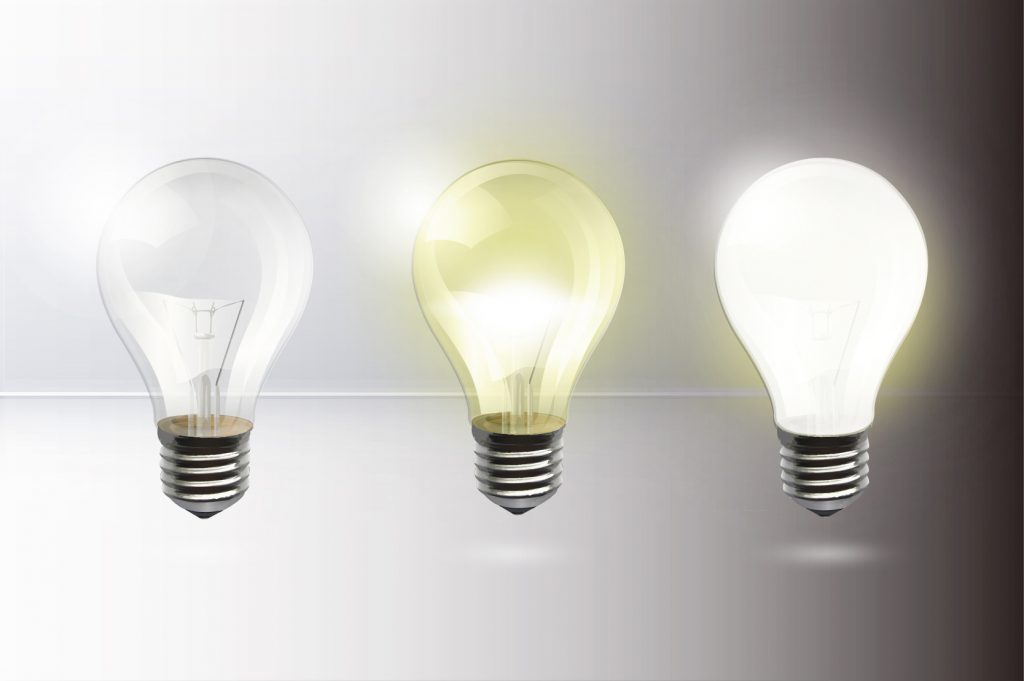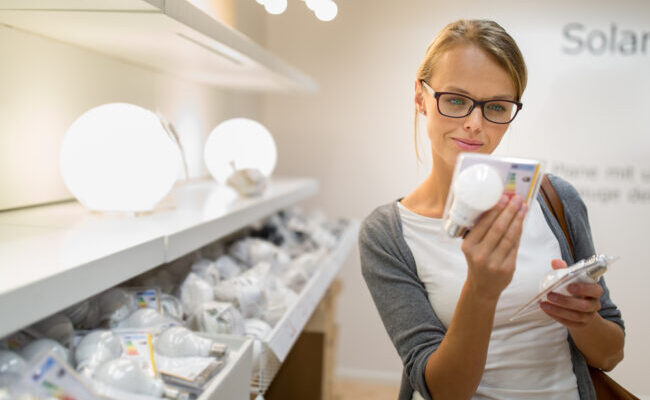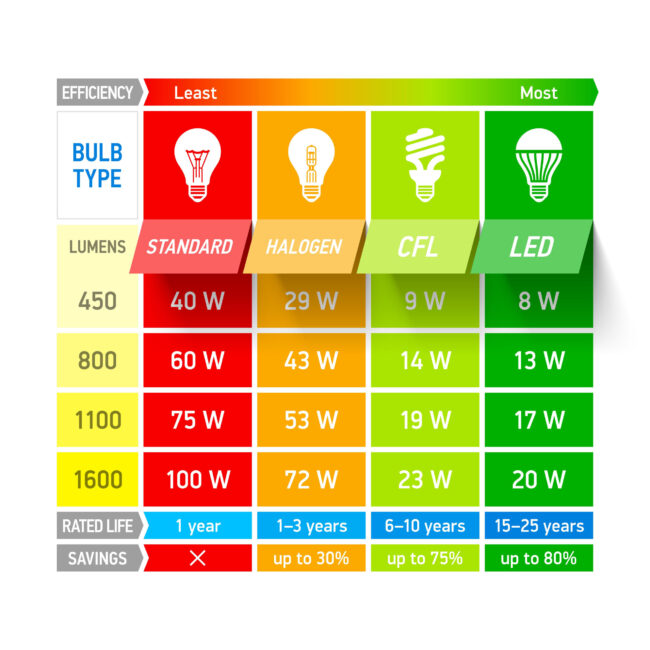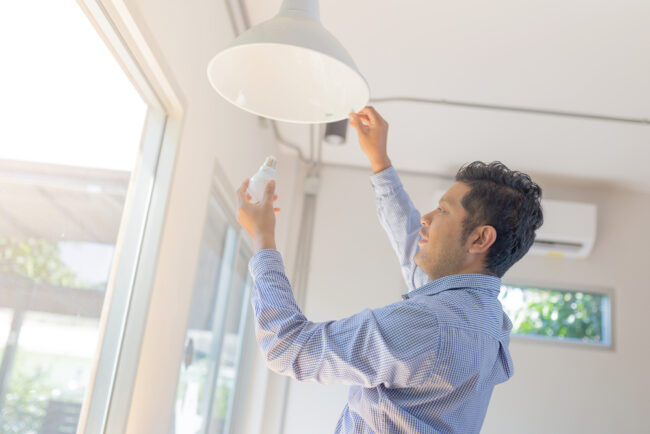Recessed lights go by many names, such as downlights, pot lights, can lights, and puck lights. No matter the name, they all refer to light fixtures that are installed inside (recessed into) your ceiling. They shine light into the room without hanging down into the space like a chandelier or a flush mount fixture.
There’s a lot to know about recessed lights before you install them in your home, but it can be hard to find all of the information you need in one place. So we’ve put together this handy guide with everything you need to know in one place to help you decide which recessed light is right for you!
Recessed Lights 101
Before we get into the nitty-gritty details, here’s a quick overview of some of the most important terms you need to know when shopping for recessed lighting.
Recessed Lighting Terms
There are three parts to a recessed light: the housing, the bulb, and the trim. The housing holds all of the wires and connectors inside a protective case that sits inside your ceiling, out of sight. The bulb is the part that gives off light. The trim is the visible portion of a recessed light that covers the housing and the hole in the ceiling, giving it a finished look.
You’ll also need to pay attention to how widely the trim allows the light to shine – this is called the Beam Angle. Recessed light beam angles can range from a narrow 15-degree spotlight to a 120-degree floodlight. Generally speaking, anything from 60 to 120 degrees will work well for general lighting in your home.
Types of Recessed Lights
Traditional – These are the original recessed lights. They’ve been around the longest, but they have their pros and cons. They’re cheaper to purchase but more expensive to operate than LED options. They also produce heat, so you’ll need to be conscious of location.
LED – These newer recessed lights may cost more upfront, but they use considerably less power to run, which makes them cheaper to use. LED bulbs last for a very long time, so you won’t have to pay to replace them every year. They also produce minimal heat, making them a safer alternative to traditional lights.
Ultra-Thin / Canless – These are a small subsection of LED recessed lights that have been designed specifically for use in remodels. The housing in these recessed lights is about as thick as drywall, so they’re much easier to install in an existing ceiling.
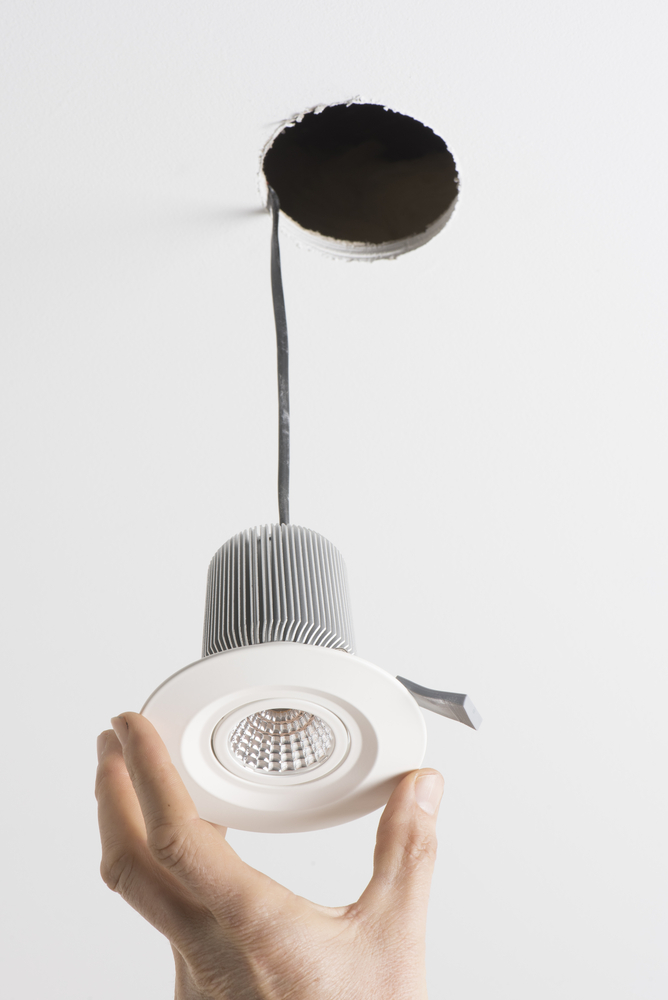
Ease of Install
If you’re replacing an old recessed light with a new one, installation is a pretty basic homeowner DIY. If you’re trying to add recessed lights where they weren’t before, that’s usually a much larger project.
Recessed lights typically have a large housing, which means they need to be installed between the framing lumber in your ceiling. In new builds, this isn’t a problem because the spacing of your lights can be planned out during construction. If you’re installing recessed lights after the fact, creating an evenly spaced grid of lights can be a little bit more difficult. You’ll likely need to hire an electrician or contractor to help run the wiring correctly.
Canless lights are often the best choice for renovations because they can be installed almost anywhere in the ceiling. While easier to install, it’s still a pretty significant electrical project. If you’re comfortable with that type of DIY work you can give it a try, but most homeowners usually hire a professional.
Sizing
Homeowners are often surprised at the size of their recessed lights after they’ve been installed. It’s important to know that the measurement on the packaging of a recessed light refers to the size of the light’s housing, not to the size of the trim.
The measurement on the packaging tells you how large the hole will need to be in your ceiling so that you can plan out your spacing. You’ll also need to take into account the size of the trim.
Remember, the trim on a recessed light is there to cover the edges of the light and the hole, so it sits below the drywall and extends out from the fixture. Because trim styles vary, a 4” recessed light could appear 5, 6, or even 7 inches wide once installed.
Make sure you double-check that you measured the right part before you cut, or you could end up with a lot of drywall patching!
How to Choose the Right Size
Recessed lights come in a lot of different sizes, but the 6” size has been an unofficial industry standard for a long time. Now, with LED technology, manufacturers are finding ways to create the same amount of light in smaller packaging. Their smaller 4” counterparts pack a pretty big punch for their size, and they just might end up being a better fit for your space.
Light Coverage
If you’re lighting an entire room with recessed lights, both 4” and 6” sizes will do the job well. They are pretty interchangeable as a general lighting option, but there are a few things to consider.
Ceiling Height: You’ll need to consider the height of your ceilings. Both 4” and 6” work well at standard ceiling height. For vaulted ceilings, you might want to consider sticking with larger lights with wide beam angles – the taller the ceiling, the more evenly diffused the light will be across your space.
Existing Fixtures: If you’re adding recessed lights to work together with an existing light fixture like a chandelier or a ceiling fan, take stock of the way the existing fixture lights the space at different times throughout the day and at night. 6” recessed lights can help raise overall ambient light if the room is too dim. 4” lights are often a better choice if you need lighting around the dark edges of a room.
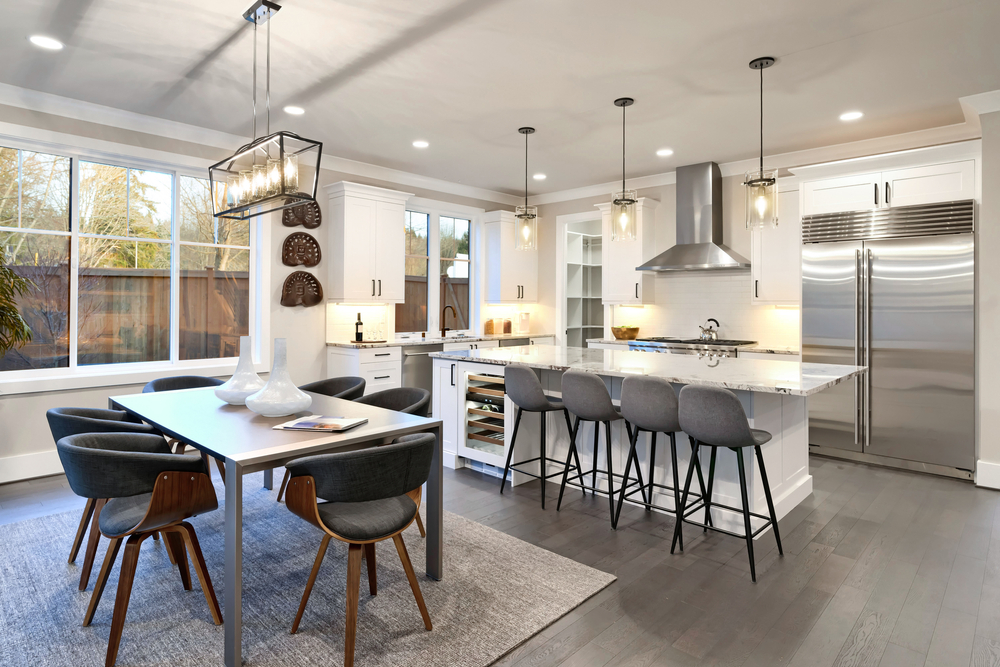
How You Use the Room: The rooms in your home don’t need an equal amount of light in every square inch. Your rooms will feel better if the lighting is tailored to the way you use them.
For example, this kitchen has beautiful pendant lights, but on their own they’d cast shadows onto the kitchen worksurfaces. This homeowner installed a row of recessed lights around the perimeter of the kitchen to provide better light on the countertop prep surfaces. In the dining area, a softer chandelier on a separate switch lights the table, which gives it a more comfortable, relaxing feel for when it’s time to eat.
Cost
4” lights are going to cost you less upfront simply because they’re smaller and cost less to make – although prices are going to vary based on materials, finishes, and special features. They also cost less to run because they use less power.
6” lights may cost more, but (depending on the specific fixture) you may be able to use fewer 6” lights to achieve the same coverage as a larger number of 4” lights.
If you’re on a tight budget, you’ll want to map out your room with both sizes and then run the numbers both ways to make sure you’re getting the best deal.
Decor
For years now, homeowners have been ditching ceiling lights in favor of a grid of recessed lights. But, the lack of visual interest is starting to sway designers back towards beautiful statement ceiling light fixtures like chandeliers and pendants.
In rooms where modern statement fixtures are providing most of the ambient light for space, larger recessed lights aren’t really necessary. 4” lights are a much better option for creating beautiful layers of light without over-lighting your space. You’ll find this size most often in rooms with a modern design.
You’ll find 6” lights most often in large open rooms that need a lot of light, and in rooms with more traditional decor.
Because 6” lights are more common, they currently have more trim styles available. If you have a specific style of trim in mind, make sure you find out if it’s available in the size you want before you buy!
Location/Uses
4” recessed lights are most commonly used in smaller spaces like hallways, home offices, and over the kitchen sink. They’re perfect for lighting a reading or craft area where you want to see what you’re doing. They’re also a great size for highlighting artwork or architectural features without washing them out.
6” lights do their best work lighting a large room like a living room or dining room. They’re also a great choice for rooms with high ceilings, as their larger size will help to spread the light more uniformly throughout the space.
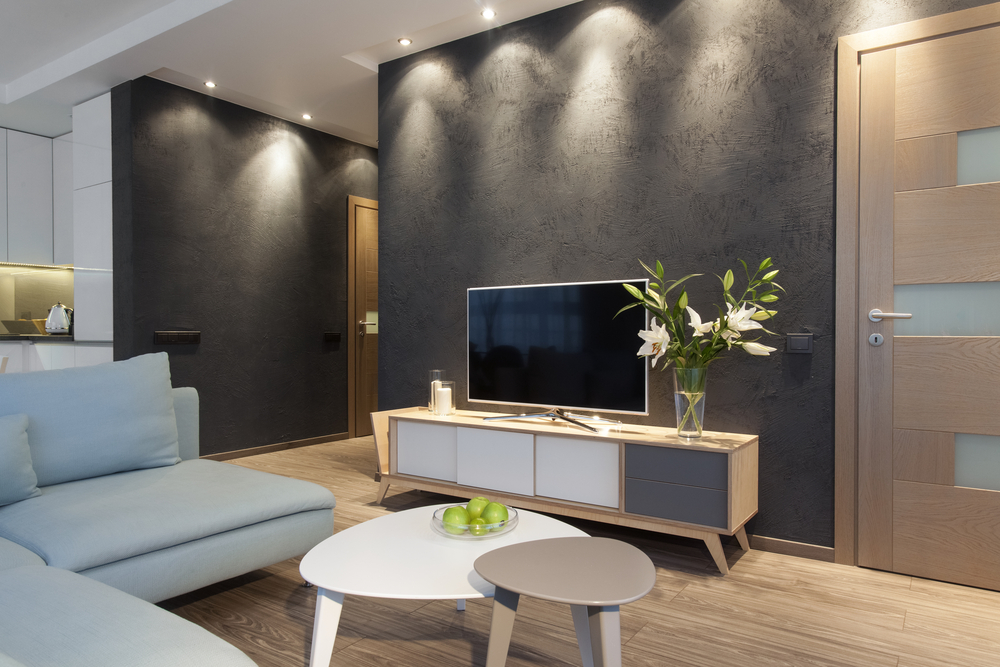
Properly placed recessed lights can make your rooms feel bigger if you employ a technique called Wall Washing. Wrapping your room in 4” recessed lights will evenly coat the wall with light, making the entire space feel more spacious. This is a great trick for smaller spaces like hallways and narrow rooms, and it helps to hide imperfections in the wall finish.
Placement is important here – if your recessed lights are installed too close to the wall, they’ll create a cone of light (called wall grazing) which will not have the same space-creating effect. The goal is to get soft, even coverage across the wall without any harsh lines.
Overview
To sum it all up, here’s a handy comparison between 4” and 6” recessed lights.
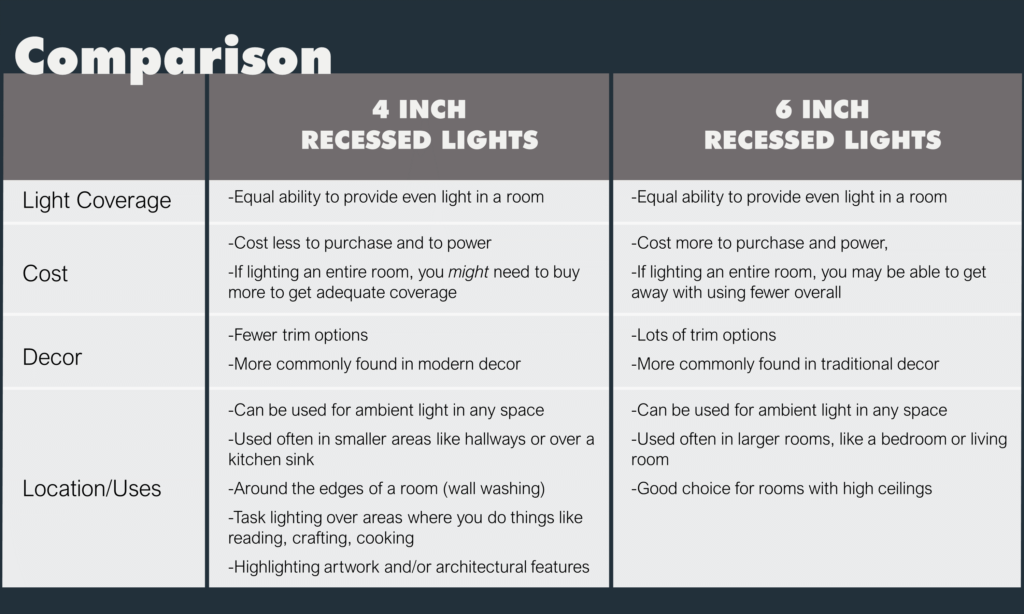
Other Things to Consider
The size you choose matters, but there are other things you need to consider before purchasing! LED recessed lighting has come a long way in the past few years, and new features are regularly being added to the lineup.
Color
LED lights come in a wide variety of colors, measured in Kelvins (K).
Warm light (up to 3000K) appears orange or yellow, like the light from traditional incandescent bulbs. It feels soft and cozy, and is a great choice for places where you want to wind down and relax, like a bedroom or a living room.
Daylight light (between 3000K – 4000K) is similar to the light at midday. It feels bright and white, and is a great choice for most rooms in the house.
Cool light (above 4000K) starts to appear blue as the Kelvins increase. Blue light feels crisp and energetic and is often used in offices and hospitals to help keep people alert. Be careful with blue light in your home – it can keep you up at night!
The color you choose for your lights will change how the paint on your walls looks, so it’s a good idea to experiment with it first before you commit.
Color Changing lights – Some LED lights are color-changing, meaning they can be set to emit warm or cool light, which takes the stress out of worrying which temperature to choose. Some lights can be changed with a switch in the housing, which is great for homeowners that want to choose what they like, set it, and forget about it. Others can be changed with a remote control or a smart hub, making the lighting in your house truly customizable to any activity.
Dimmable
We recommend installing LED lights on a dimmer switch whenever possible! Because they are so bright, it’s nice to be able to dim the lights to a level that you’re comfortable with throughout the day. Most LED lights are already dimmable, but some aren’t, so you’ll need to double-check before purchasing if this is a feature you want in your home!
Smart Technology
Smart LED recessed lights come with the ability to communicate with other technologies in your home, like a smart hub. Depending on the features, this means you could set your lights on a schedule or even turn them on with a voice command instead of a switch.
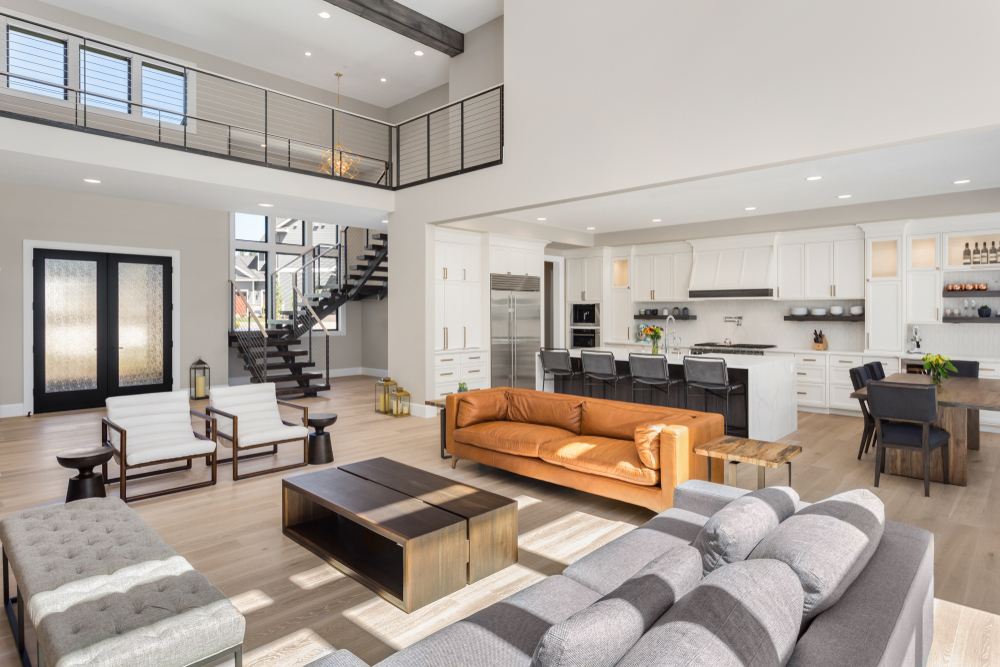
There are a lot of things to consider when you’re installing recessed lights. Our lighting experts know all of the ins and outs and would love to share their knowledge with you to help get you started. Give us a call or stop by our showroom and see for yourself how recessed lighting can completely transform your home.
